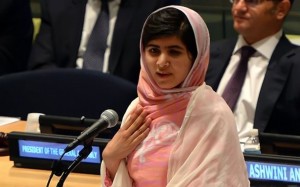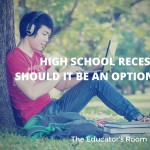[fusion_builder_container hundred_percent=”yes” overflow=”visible”][fusion_builder_row][fusion_builder_column type=”1_1″ background_position=”left top” background_color=”” border_size=”” border_color=”” border_style=”solid” spacing=”yes” background_image=”” background_repeat=”no-repeat” padding=”” margin_top=”0px” margin_bottom=”0px” class=”” id=”” animation_type=”” animation_speed=”0.3″ animation_direction=”left” hide_on_mobile=”no” center_content=”no” min_height=”none”]
On October 9, 2012, Taliban gunmen shot 14-year old Malala Yousafzai in the head and neck while she rode home on her school bus. They meant to make an example of her: by killing her violently, other girls in her Pakistani district would be frightened away from going to school. Malala was their target because she was well known. From the age of 11, she had been blogging for the BBC (her father was a BBC reporter) about her experiences of education as a girl in a society strictly controlled by the Taliban. In January 2009, the Taliban had decreed that no girls could attend school, and they had already blown up more than 100 girls’ schools when that ban went into effect. As access to school shifted and changed for girls in her district, Malala blogged about her experiences and became hated by the Taliban.
Miraculously, the bullets did not kill Malala. Medical assistance offers came in from around the world, including from Gabrielle Giffords, the US Representative who had also been shot in the head earlier that same year. After some initial surgeries in Pakistan, Malala was transferred to the UK, where she received further lifesaving medical care. Two years later, on July 12, 2013 – her 16th birthday – Malala stood before the United Nations Youth Assembly of over 1,000 students from around the world, and spoke about children’s access to education. Still fearless, she declared to the world:
“The terrorists thought that they would change my aims and stop my ambitions, but nothing changed in my life except this — weakness, fear and hopelessness died, strength, power and courage was born.”
The day she spoke was declared “Malala Day” by the United Nations. But in response to this recognition, she said:
“Thousands of people have been killed by the terrorists and millions have been injured,” she said. “I am just one of them. So here I stand, one girl among many. I speak not for myself but for those without voice … those who have fought for their rights — their right to live in peace, their right to be treated with dignity, their right to equality of opportunity, their right to be educated.”
Malala’s message to the UN Assembly and all world leaders was that a free, compulsory education should be made available to all children of the world. This incredibly courageous young woman has opened a worldwide dialogue about children’s education. And while she survived a brutal assassination attempt and is using her experience to encourage advancing worldwide education, but many school girls do not survive the violence perpetrated against them. School children in places like Afghanistan and Pakistan have been killed when their schools were bombed, they have had acid thrown in their faces, and they have faced gunmen banning them from attending school. Children in other developing countries have no access to school because the resources simply aren’t there, or they must spend their days working to help their families merely survive.
Here in the United States, it is easy to assume that we are immune from what Malala and children who grow up in similar circumstances face. But we too must face the reality millions of American children face: hunger, homelessness, and violence on the way to school, or when they get home. In fact, thousands more children will be vulnerable starting this fall when cities like Chicago follow through with plans to close and consolidate hundreds of schools, forcing children to travel through neighborhoods that will prove even more dangerous for them.
Malala teaches us that education is the best tool we have to combat the forces working against threats like violence, hunger, and injustice. Just the influence of this young girl has prompted the UN to recommit to Millennium Development Goal 2: that by 2015, “children everywhere, boys and girls alike, will be able to complete a full course of primary schooling.” Sometimes amidst all of our concerns over curriculum, testing, and the myriad of other problems our education system faces, we forget the bottom line: our children deserve access to an education. That education must be free of violence and intimidation, and it must lead to a future free of violence and intimidation. We as a society owe this to our children, and as Malala reminds us:
“So let us wage a glorious struggle against illiteracy, poverty and terrorism, let us pick up our books and our pens, they are the most powerful weapons. One child, one teacher, one book and one pen can change the world. Education is the only solution. Education first.”
[/fusion_builder_column][/fusion_builder_row][/fusion_builder_container]





